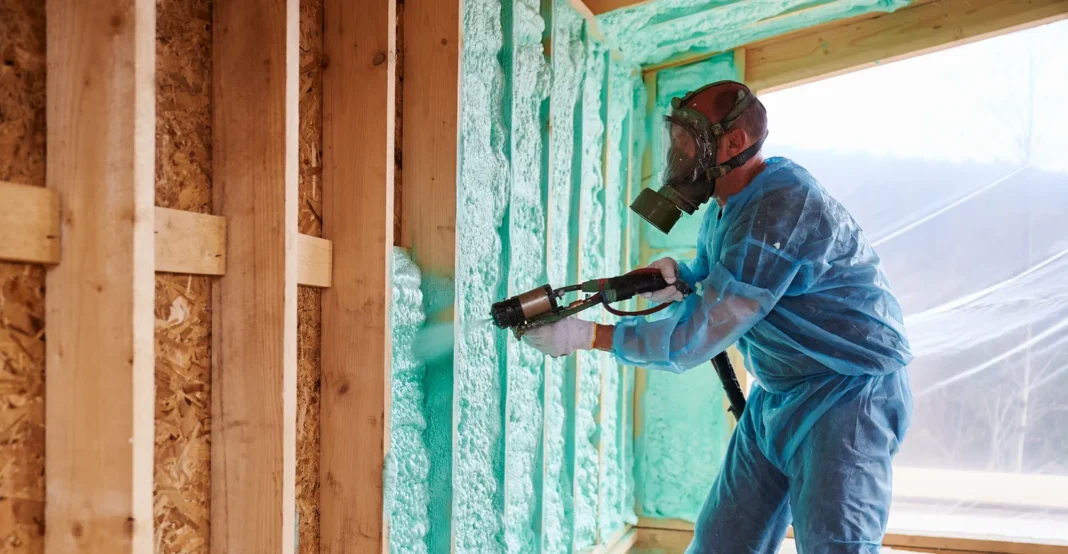As the construction industry continues to evolve, building practices are shifting toward higher energy efficiency, better sustainability, and advanced thermal performance. One area where innovation is particularly noticeable is new construction insulation. As 2025 unfolds, homeowners and builders in Las Vegas, NV are adopting smarter insulation solutions to handle the region’s extreme climate conditions and meet rising energy standards.
From environmentally friendly materials to cutting-edge installation techniques, the trends shaping new construction insulation in 2025 are designed to improve home performance and reduce long-term energy costs. Whether you’re building your first home or managing residential construction projects, staying ahead of these trends ensures better results from the ground up.
The Rising Importance of Energy Efficiency
With energy costs climbing and sustainability becoming a top priority, insulation is no longer just about comfort—it’s about reducing consumption and environmental impact. New homes built with strategic new construction insulation can cut heating and cooling costs by as much as 20–30% annually.
In Las Vegas, where cooling demands dominate most of the year, using advanced insulation materials and methods helps homeowners reduce their utility bills while maintaining a cooler, more comfortable interior. Builders are placing greater emphasis on high R-value products, airtight design, and whole-house insulation strategies that make a noticeable difference year-round.
Trend #1: Use of Eco-Friendly and Recycled Materials
Sustainability is driving many of the changes in 2025’s insulation market. More builders are turning to eco-friendly insulation options that use recycled content and are free from harsh chemicals. Materials like cellulose (made from recycled newspaper), denim, and sheep’s wool are gaining popularity because they offer solid thermal performance and minimal environmental impact.
Even fiberglass and foam insulation manufacturers are now offering “green” versions that use fewer pollutants and recycled components. Choosing environmentally conscious insulation doesn’t mean sacrificing efficiency—it means combining performance with a smaller carbon footprint.
Trend #2: Closed-Cell Spray Foam as a Go-To Option
Among all the trends in new construction insulation, closed-cell spray foam remains a top choice for 2025. Its high R-value, moisture resistance, and superior air sealing make it ideal for extreme climates like Las Vegas. Builders are using spray foam in walls, attics, and crawl spaces to create a tightly sealed thermal envelope that keeps outdoor temperatures at bay.
Additionally, the dual-purpose nature of spray foam—providing both insulation and air barrier—makes it highly efficient and cost-effective over time. With building codes tightening, spray foam helps ensure compliance while reducing energy waste.
Trend #3: Continuous Exterior Insulation
Thermal bridging—where heat transfers through framing or studs—is a growing concern in residential construction. To combat this, many homes in 2025 are incorporating continuous exterior insulation systems. Rigid foam boards or mineral wool panels are installed on the outside of the framing to create an uninterrupted layer of insulation, significantly improving overall performance.
This method is particularly beneficial in hot climates like Las Vegas, where controlling solar heat gain is crucial. Continuous exterior insulation reduces thermal bridging, improves air sealing, and enhances the overall energy efficiency of the home.
Trend #4: Integrated Smart Building Technology
Smart home features aren’t just for lighting and thermostats—smart insulation technology is making waves in 2025. Some insulation systems now integrate with home automation to monitor indoor temperatures, humidity, and even air quality in real time. These high-tech systems can adjust ventilation or signal when performance declines due to aging or damage.
While still gaining traction, this trend is expected to grow, especially in energy-conscious markets. Builders who want to future-proof their properties are beginning to explore these connected insulation solutions as part of a broader smart home strategy.
Trend #5: Advanced Building Envelope Design
The building envelope—which includes insulation, air sealing, windows, and wall assemblies—is being designed more holistically in 2025. Instead of treating insulation as an isolated component, modern builders are using whole-house strategies that coordinate insulation with other energy-saving elements.
High-performance homes now include:
- Layered insulation systems with spray foam and fiberglass batts
- Radiant barriers in attics
- Well-sealed ductwork and mechanical systems
- Proper ventilation to prevent moisture buildup
This integrated approach ensures maximum energy savings, better moisture control, and more durable construction in the hot, dry Las Vegas environment.
Trend #6: Focus on Moisture and Mold Prevention
Moisture management is another trend shaping new construction insulation strategies in 2025. Even in dry climates like Las Vegas, homes are vulnerable to moisture intrusion from plumbing leaks, condensation, or extreme weather.
Builders are paying close attention to insulation products that offer moisture resistance, such as closed-cell spray foam and rigid foam boards. These materials help prevent mold growth and preserve indoor air quality. Additionally, proper sealing and the use of vapor retarders help protect insulation from becoming compromised over time.
Meeting 2025 Building Code Requirements
New energy codes and regulations are pushing the construction industry to aim higher in terms of energy efficiency. In Las Vegas, homes must meet or exceed standards outlined in the International Energy Conservation Code (IECC), which has been updated for 2025. This includes higher R-value requirements, better air sealing, and verification through energy testing.
Staying current with these codes is essential for passing inspections and ensuring optimal home performance. Builders working with insulation professionals can ensure they meet all local requirements without compromising quality or comfort.
Customizing Insulation Strategies for the Las Vegas Climate
Not all insulation performs the same in every climate. Las Vegas presents unique challenges with its intense summer heat, occasional cold snaps, and low humidity. That’s why it’s important to customize new construction insulation plans based on building orientation, window placement, attic design, and ventilation.
Choosing the right combination of insulation types—such as spray foam in attics, fiberglass batts in interior walls, and rigid foam on exteriors—ensures that the home remains energy-efficient regardless of the season.
Choose Attic Insulation Las Vegas for Expert New Construction Insulation in 2025
At Attic Insulation Las Vegas, we stay ahead of the latest trends to deliver high-performance insulation solutions tailored for Las Vegas, NV. Whether you’re a homebuilder, contractor, or future homeowner, our team brings unmatched expertise in new construction insulation. We use industry-leading materials, follow the latest building codes, and understand what it takes to achieve true climate control in the desert. Call us today at (702) 745-7890 or visit atticinsulationlv to learn how we can help insulate your new build for efficiency, durability, and comfort in 2025 and beyond.







